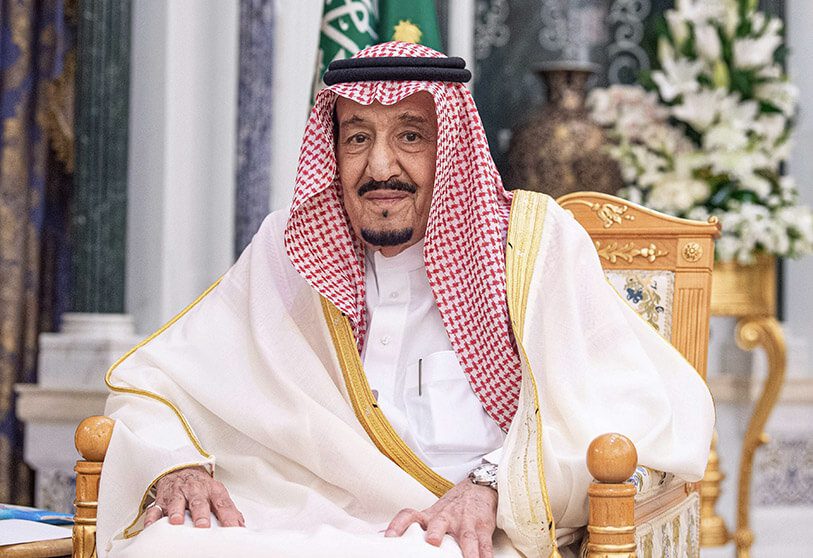Saudi Arabia, on Tuesday, Feb. 22, celebrated the “Foundation Day,” a memorable moment marking the day Imam Mohammed Ibn Saud established the first Saudi state in 1727 in the city of Dariya, northwest of Riyadh.
Declared last month by King Salmane bin Abdelaziz al-Saud, this anniversary, which expresses pride in the state’s strong roots and the close bond between its citizens and its rulers since the era of Imam Muhammad Ibn Saud three centuries ago, is in addition to Saudi Arabia’s national holiday, celebrated on September 23 each year to commemorate the unification of the kingdoms of Najd and Hejaz.
A series of events are organized in all cities to showcase the kingdom’s heritage, history and culture.
In a Twitter post, King Salman Ibn Abdelaziz wrote: “We are proud of the celebration of the anniversary of the founding of this blessed state in the year 1139 AH (1727). Since then and until today, this state has laid the foundations of peace, stability and justice.”
He added that “the celebration of this anniversary is the commemoration of the history of a country, the cohesion of a people, and resilience in the face of all challenges to look forward.
In a statement to the news site “Sahara Media,” the head of the information committee of this day of the foundation, Mohamed Ben Fahd Al-Harthy said that this day is “dear to our hearts because it connects us to the expansion of the Saudi state for three centuries, and it is an opportunity to remember the sacrifices of our forefathers, who created this state that we are proud of.”
Mr. Al Harthy, who serves as the head of the Saudi Radio and Television Authority, explained that Saudi Arabia “usually celebrates the national holiday associated with the founding of the third Saudi state by the late King Abdelaziz, but the occasion of the foundation day links us to the founding of the first Saudi state by Imam Mohamed Ibn Saud in 1727.”
For him, the celebration of the Foundation Day “gives us a glimpse of our current reality. In recent years, Saudi Arabia has undoubtedly achieved unprecedented development and is moving towards the realization of Vision 2030, which aims to develop a dynamic and prosperous economy but also to build a vibrant and dynamic society whose objectives include the development of quality of life, culture, recreation, education and health.” This development, he went on, “will benefit all countries in the region, since the Kingdom is an important and influential country has relations with many countries.”
Commenting on the event, Saudi Foreign Minister Prince Faisal Ben Farhan Ben Abdellah Al-Saud said that “this is an occasion that calls for pride,” adding that the royal decree designating February 22 as the day of commemoration of the founding of the Saudi state is confirmation that the kingdom is a very old nation with a multi-dimensional civilization and heritage and rooted in history.
In a video message via Twitter the minister stressed that “the kingdom’s active political role at the regional and international levels cannot be realized without its belief in an approach based on moderation, openness, dialogue and cooperation with members of the international community, so as to lay the foundations for international peace and security.”
Activities celebrating the foundation day were held in major cities, while the capital, Riyadh, was the center of these celebrations, during which the “Foundation Walk” was organized, a great show in which more than 3,500 actors and performers participated. They presented the history of Saudi Arabia for three centuries, its cultural identity and its Arab and Islamic heritage, with operettas performed by renowned artists, such as the Saudi Mohamed Abdou.
The “Foundation Walk” was held at Wadi Namar, near the capital city of Riyadh, and included visual displays in the form of exhibition panels, the first of which was named “The Voice of the Land” and the second, “The Situation Before Mani Al-Muridi,” the grandfather of the Al Sauds who founded the city of Dariyah, the first capital of the Saudi state.
As for the third panel, it told the story of Mani Al-Muraydi’s arrival in Najd and the foundation of the city of Dariyah, while the fourth one embodied the state of “instability.” The fifth depicted the “founding of the state” by Imam Mohamed bin Saud and other panels traced the history of the “Banners of Unity” and also the role of women in building the Saudi state under the title “Ladies of Glory.”
The march included holograms that painted images on the rocks of the valley, tracing the history of the founding of the Saudi state, before ending with fireworks that rose into the sky of the capital Riyadh.
In the Riyadh Museum building, a heritage exhibition was held in the form of markets during the time of the first Saudi state, in the mid-18th century, and was called “Najnaj,” which refers to popular markets frequented by many people and mingled with voices and bustle.
In the market, popular foods, clothes, ornaments and utensils used at that time were displayed, most of which are still present in people’s lives today. The market (Souk) has five gates each leading to one of the regions of the Kingdom of Saudi Arabia (central, eastern, northern, western and southern regions).
HA/fss/abj/APA


